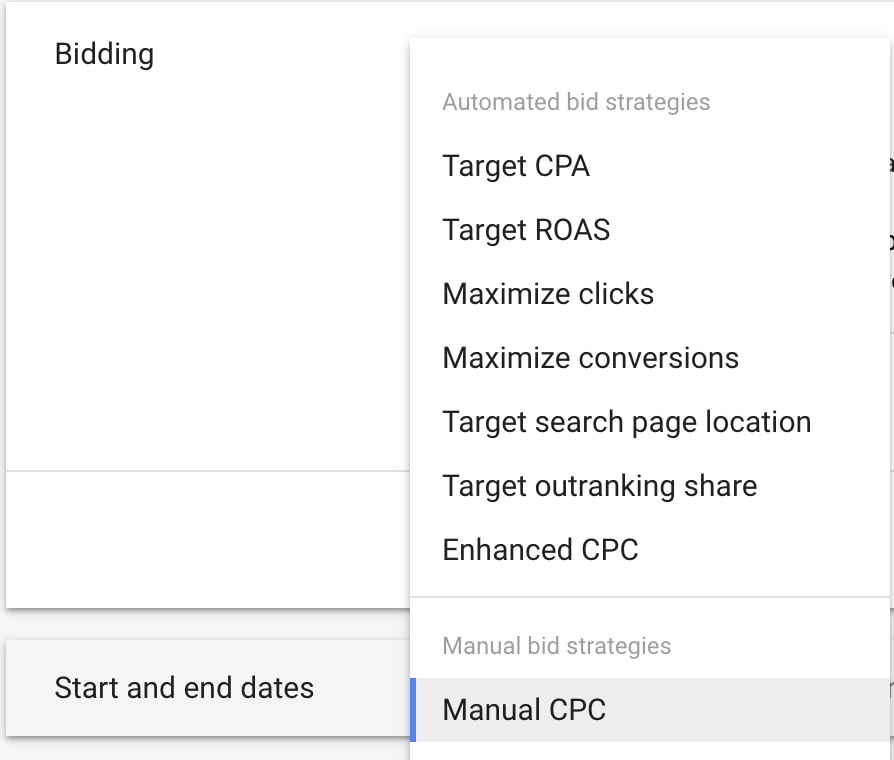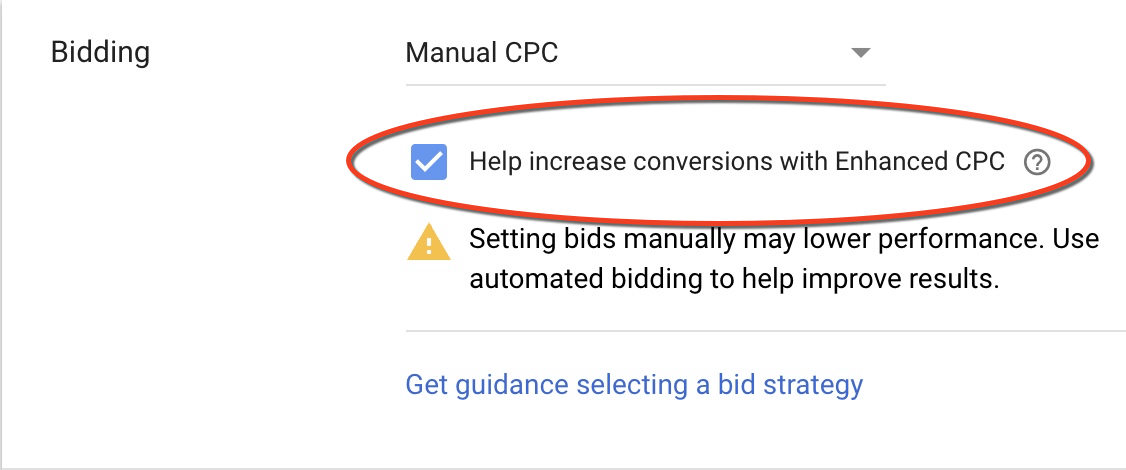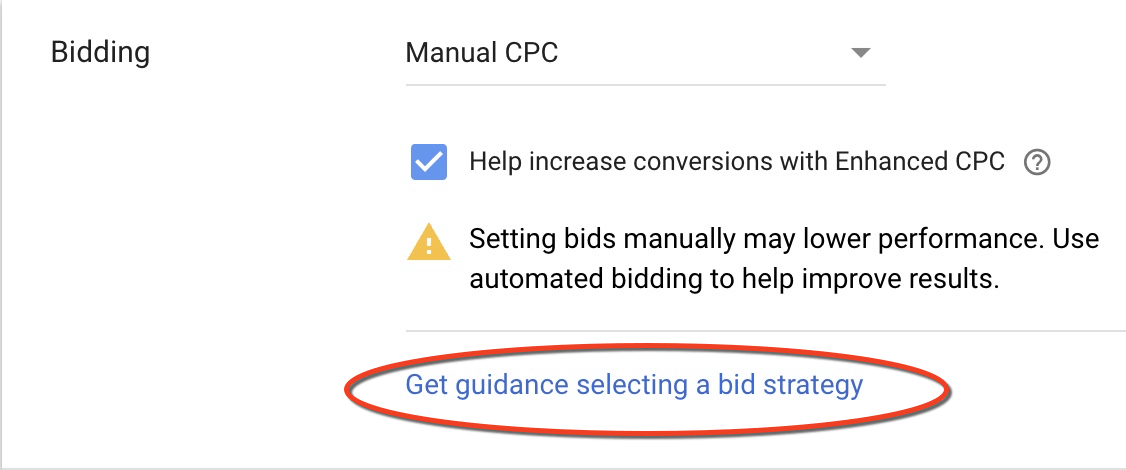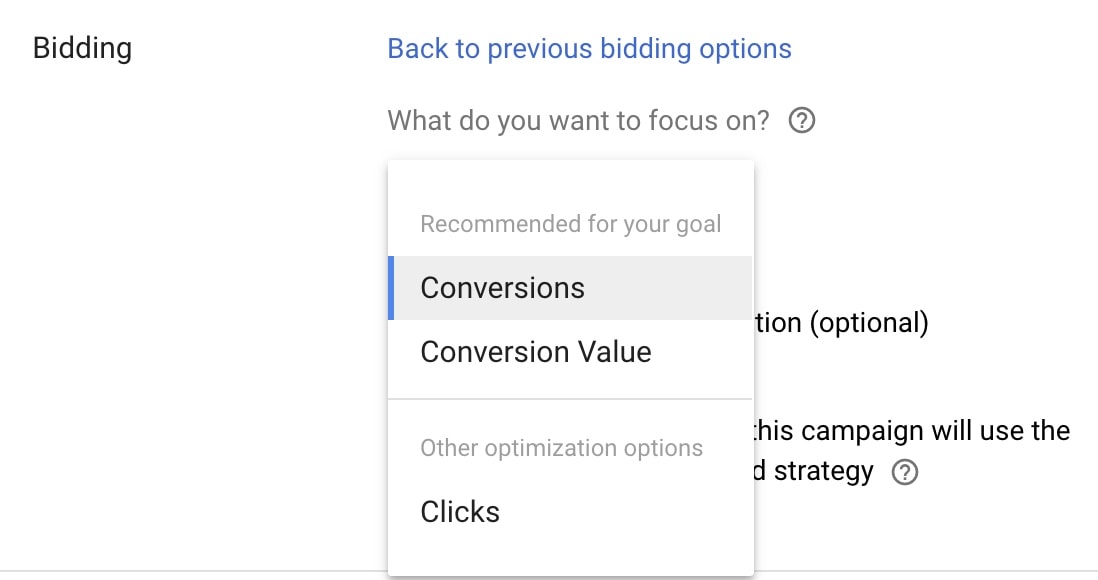Of all of the technical aspects of PPC, none confounds both pros and novices more than bid strategy.
This is partly because there are so many bid strategy options in Google Ads, each with its own nuances.
Even when you think you understand how they work based on their descriptions, that doesn’t always translate into how they work in practice. As a result, you’re never entirely sure of your footing.
Therefore, in this article, I’m going to walk you through some of the basics of manual and automated Google Ads bidding. I’ll then give you some tips for moving into automated bidding when you’re ready.
Should You Choose Manual or Automated Bidding?
Manual bidding lets you set your own maximum cost-per-click (CPC) for your ads.
In contrast, automated bidding sets the bid amount for you based on different factors.
If you’re new to Google Ads, you might assume that automated bidding is the easier and safer approach.
Because bid amounts are set automatically, you don’t need to monitor them as carefully, right?
Unfortunately, that isn’t always the case.
As a result, many paid search account managers continue to rely heavily on manual bids instead of automated.
In fact, there are four main reasons why PPCers continue to use manual bid strategies in Google Ads.
Reason 1: Automated Bidding Requires Volume
In accounts with large conversion volumes, automated bidding can work well. These accounts generate lots of data that Google’s bid algorithm can use to calculate the best bid amount.
But without this volume, the algorithm can jump to the wrong conclusions.
This is why Google requires a minimum of 30 conversions in the past 30 days for some automated bid strategies.
In practice, I would place that minimum number closer to 45 or 60 conversions to make sure you have enough data to work with.
Consequently, manual bidding may be your only option for smaller accounts with less activity.
Reason 2: Automated Bidding Requires History
Even if your account has sufficient volume, an uneven history can also be a problem.
If your account is subject to swings due to seasonality or other reasons, these swings can make bid automation a challenge.
If you go through a particularly hot period, Google will set bids that are in keeping with that hot period, and vice versa for a slow period.
But, as they say in stock market trading, past performance isn’t always an indicator of future performance.
Reason 3: Automated Bidding May Require Flexible Budgets
With automated bidding, Google needs the flexibility to make adjustments and optimizations on the fly.
This can sometimes result in significant periodic jumps in ad spend — and your budget needs to be open enough to absorb them.
Reason 4: Manual Bidding Can Give Experienced PPCers an Edge
We find that many of our client campaigns perform better when we set bids manually rather than automatically.
This can happen for a variety of reasons.
Sometimes:
- Manual bidding gives us a competitive edge because we can react more quickly to marketplace changes.
- The campaigns are simply too complex, low volume or nuanced for the algorithms to handle.
- We aren’t entirely sure why we’re getting better results — we just know that we are.
Manual Bidding
To set up manual bidding in Google Ads, go to bidding and scroll to the bottom of the strategy list:

Then, select “manual CPC.”
Here are a few additional tips on manual bid setting:
1. Set Automated Bid Rules
Just because you’re setting bids manually, that doesn’t mean you don’t have other tools at your disposal to manage bids.
We often set rules to push bids higher or lower depending on our objectives. This gives us a bit more control and relieves some of the pressure of daily monitoring.
For example, you can set an automated rule that will boost your keyword bid if it falls off the first page of results.
2. Try Tiered Bidding
Another strategy to consider with manual bidding is “tiered bidding.”
With tiered bidding, you assign different bid amounts to different types of keyword matches.
For example, you would probably want to assign a higher bid to an “exact match” term because it’s more likely to bring in relevant terms than “broad match” terms.
3. Opt Out of Enhanced CPC
When you select manual CPC, Google Ads automatically opts you into Enhanced CPC as you can see in this screenshot:

Make sure you unclick the “Help increase conversions with Enhanced CPC” check box — unless you actually want Enhanced CPC!
4. Take a Look at ‘Get Guidance’
When you set up a manual bid, Google Ads allows you to “get guidance selecting a bid strategy”:

After you click this link, you then choose what’s most important to the account, and Google will recommend an automated strategy for you:

This isn’t to suggest that you should choose that recommended strategy. But it does provide a helpful point of reference — and it’s something you might consider testing in the future.
Automated Bidding
At some point, with a large enough account, you might decide to give automated bidding a try.
That doesn’t mean you need to choose all automated bids. You can always do a mix of automated and manual.
You have seven automated bidding options to choose from. Each option is designed to meet a different type of business goal.
It’s easy to get excited about these options based on their descriptions. But they don’t always perform the way you envisioned (or hoped!). So keep an open mind and keep testing.
Here are some tips for implementing automated bidding strategies:
1. One Size Doesn’t Fit All
It’s always tempting to get familiar with one automated strategy and then apply it to all your campaigns.
But one size does not fit all!
One campaign may do well with target CPA while another may do better with maximized conversions, for example.
You need to think about your goals and the strategies available. Then experiment and test!
2. Be Patient
Google’s machine learning will take time to get smart — so prepare yourself for some nerve-racking ups and downs.
Often, Google’s advice is to “give it a week,” which easier said than done when it’s your (or your client’s) budget that’s burning up.
Try to be patient and have some antacids on hand.
3. Don’t Set & Forget
You might think you can set up automated bidding and walk away.
Unfortunately, you can’t.
You will still need to monitor and adjust your settings.
4. Set up Conversion Tracking
Automated bids are based on conversion tracking, so having this set up correctly is a must.
5. Set Bidding Strategy at the Campaign Level
For the sake of simplicity, you might be tempted to set up your bidding strategy at the account level, but I don’t recommend it.
You need to get more granular because your objectives may differ significantly among campaigns.
Instead, set up your bid strategy at the campaign level for greater precision.
6. Look into Portfolio Bid Strategies
One way you can simplify things is to use portfolio bid strategies.
When you set a portfolio bid strategy, it’s stored in your shared library.
You can then apply these same strategies across multiple campaigns, ad groups and keywords, without having to create them from scratch again.
7. Your Chosen Bidding Strategy May Work Differently for Google Shopping
Don’t assume that the bid strategy you set up for Search will also work perfectly for Google Shopping.
Look at Shopping separately and reassess your strategy.
Approach Google Ads Bidding with Caution
The intent of all this information isn’t to scare you off bidding entirely. But it pays to know your options, be aware of some of the pitfalls, proceed with caution and test like crazy!
In my next SEJ column, I’m going to give an overview of each of the automated bidding strategies available to you.
More Paid Search Resources:
- A Manual Bidding Process for an Automated World
- Machine Learning in AdWords: How & When to Use Smart Bidding
- How to Use Automation to Boost PPC Performance
Image Credits
Feature Image: Dreamstime
Screenshots taken by author, July 2018





